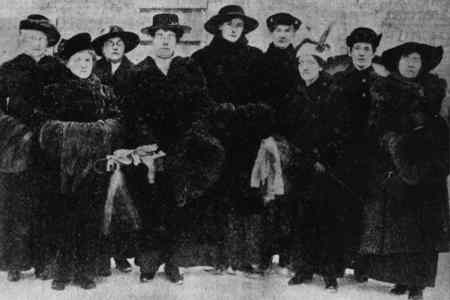- Women in the DCB/DBC
- Introduction
- Women Voting before 1851
- Coming Together to Demand the Vote
- The Right to Vote and Women’s Demands
- Relations with Militants and Organizations in Other Countries
- The Right to Vote in Municipal Elections
- The Right to Vote in Provincial and Territorial Elections
- The Right to Vote in Federal Elections
- Indigenous Women’s Right to Vote
- Opposition, Indifference, and Doubt
- Suggested Reading
Coming Together to Demand the Vote

Source: Link
Determined to transform the situation [see Women Voting before 1851], the physician Emily Howard JENNINGS (Stowe) played a vital role in consolidating and planning efforts to win the vote for women and to press for other social reforms:
“Under the tutelage of Clemence Sophia Lozier, who was noted for her dedication to woman suffrage and black emancipation, Stowe had become a strong proponent of equity, and her political work would be infused by a commitment to ensuring that women received the same services as men. When she returned to Ontario in 1867, Canadian women had not yet begun to organize, but during the 1870s, as they embraced the causes of education, enfranchisement, and temperance that marked woman’s reform in this country, Stowe led and gave shape to their efforts.”
The organizations that emerged from this consolidation were important springboards for action for suffragists, as illustrated by the initiative of Jennie Phelan HUTCHINSON (MacMichael):
“MacMichael was also a founding member of the suffrage club that became the New Brunswick branch of the Dominion Women’s Enfranchisement Association. Initiated in 1894, this tiny group of 18 suffragists, although of respectable social standing, faced ‘indifference and hostility’ in its drive for women’s suffrage. Yet the group was the ‘standard bearer’ of this reform in the province, since it was, as Elspeth Tulloch points out, ‘the first and only provincially-oriented society to dedicate itself exclusively to the cause of women’s enfranchisement.’”
The following biographies provide more information on the role of women’s collective movements in the fight for the right to vote:





